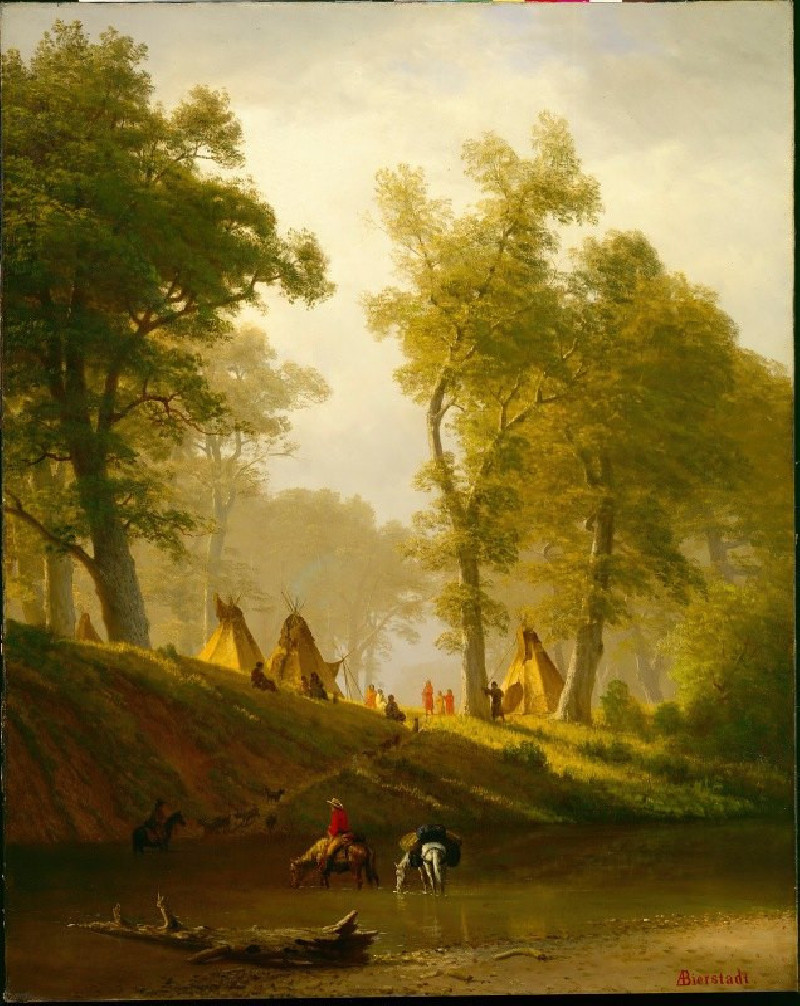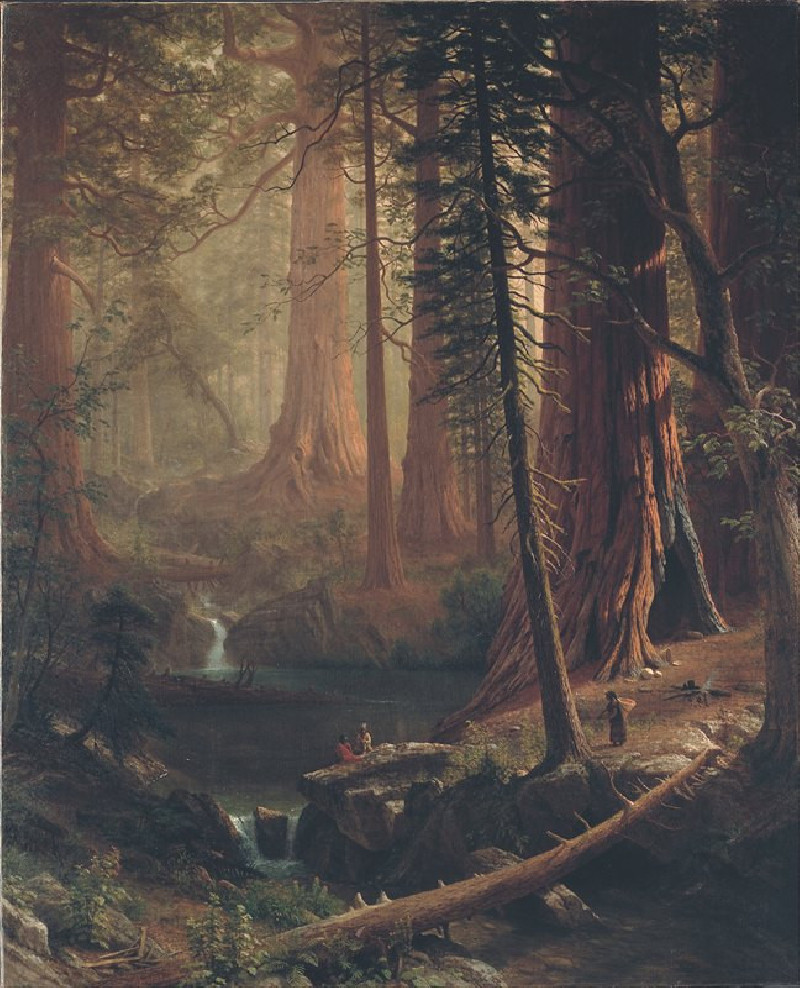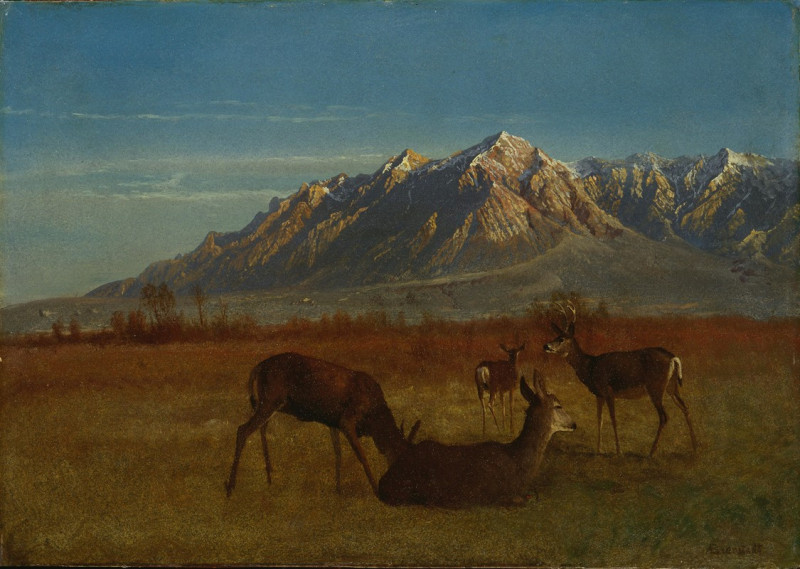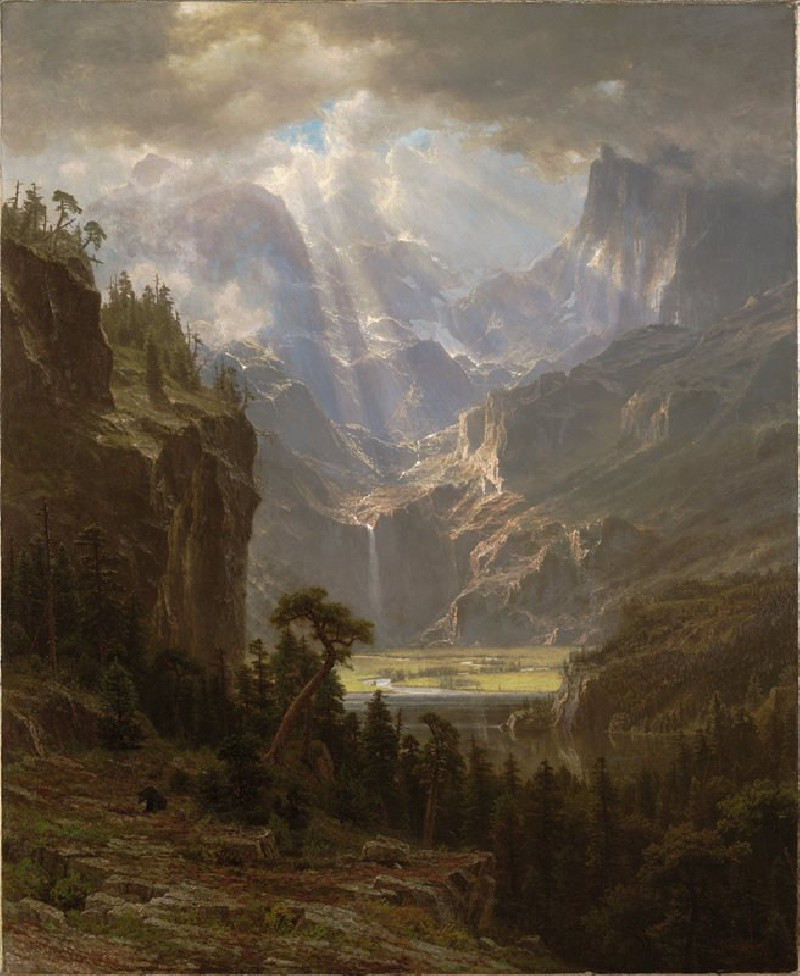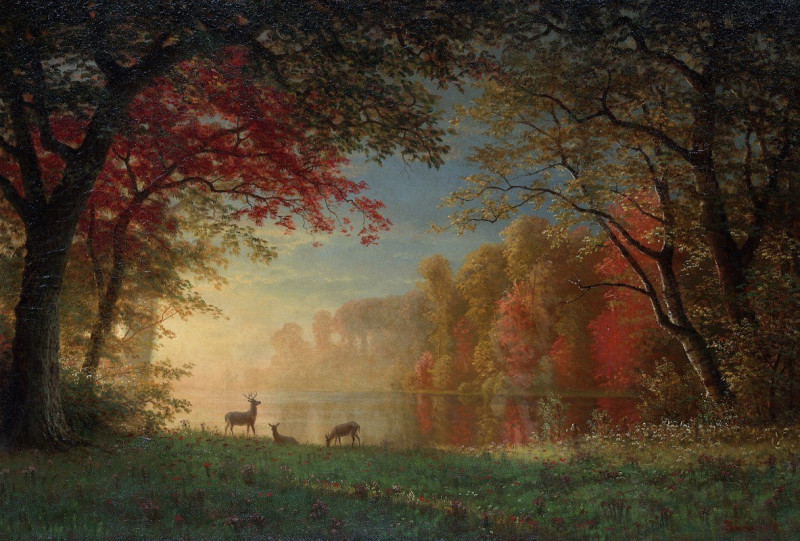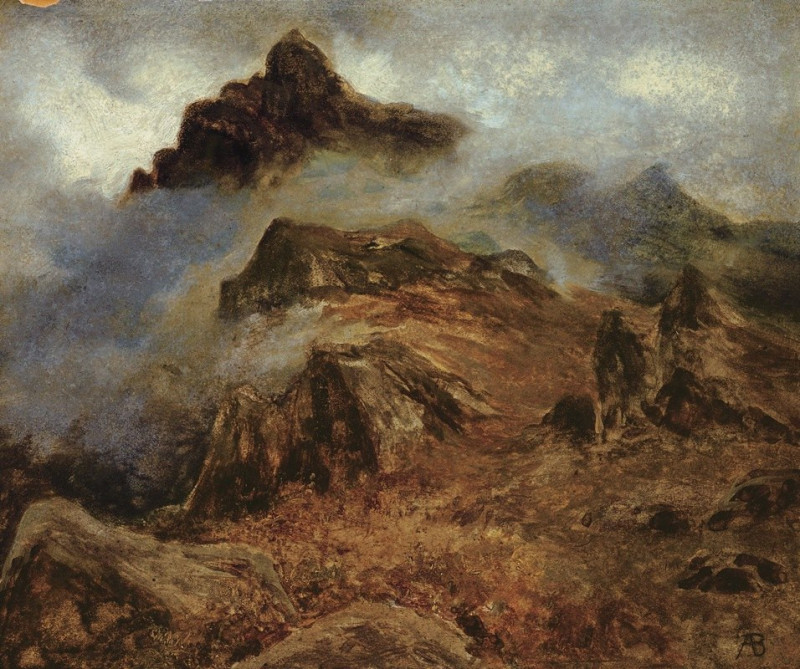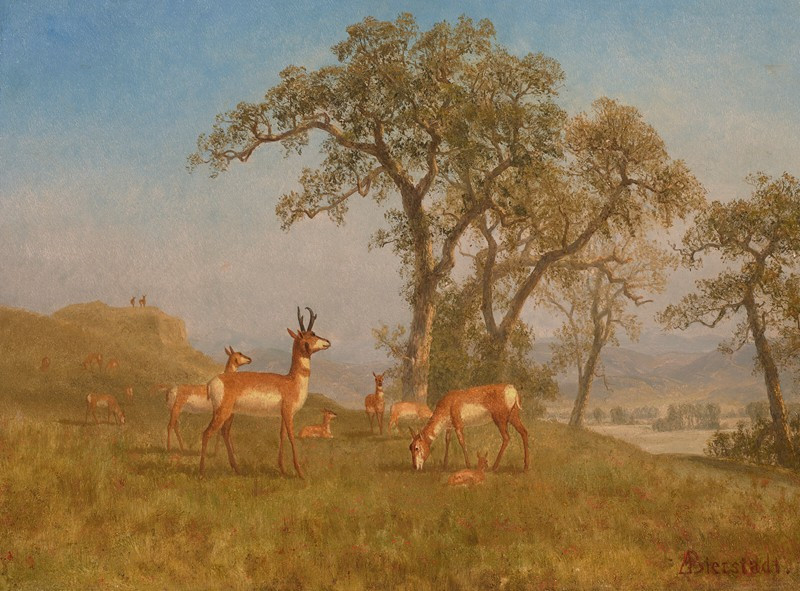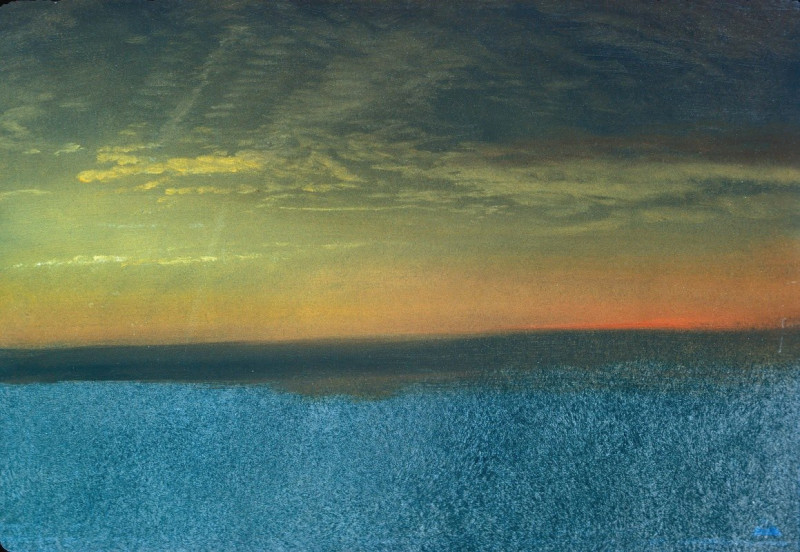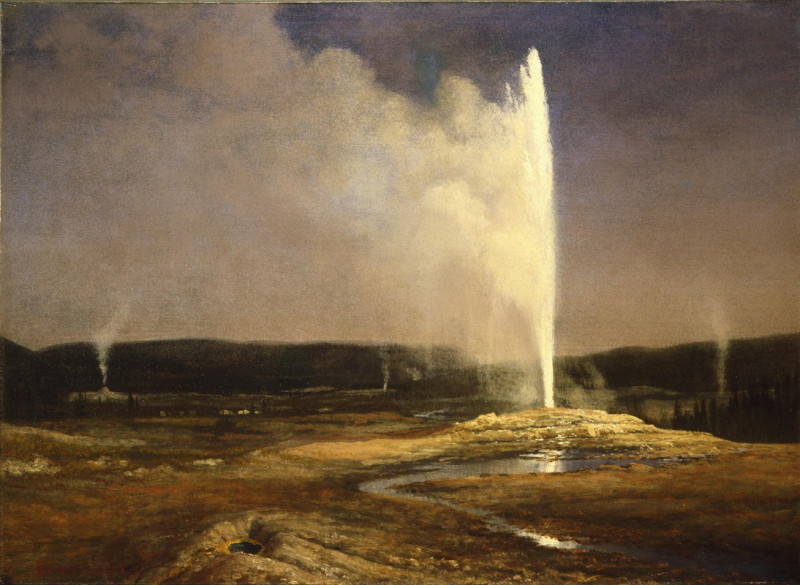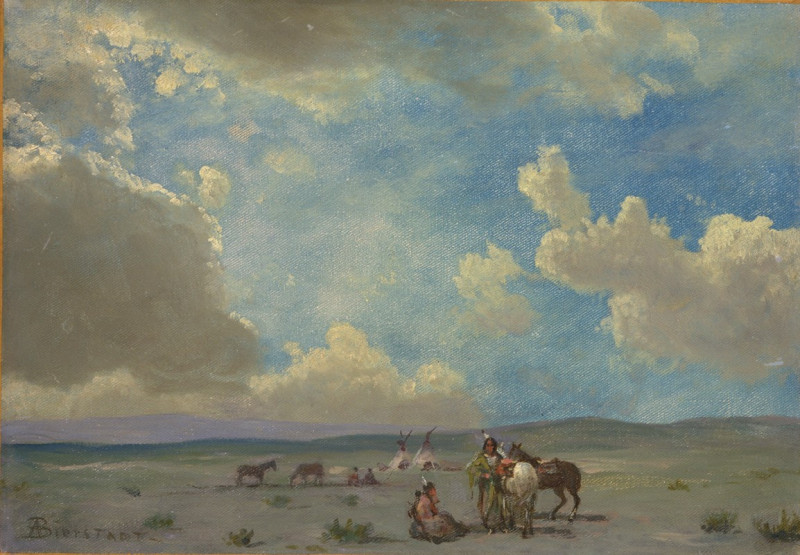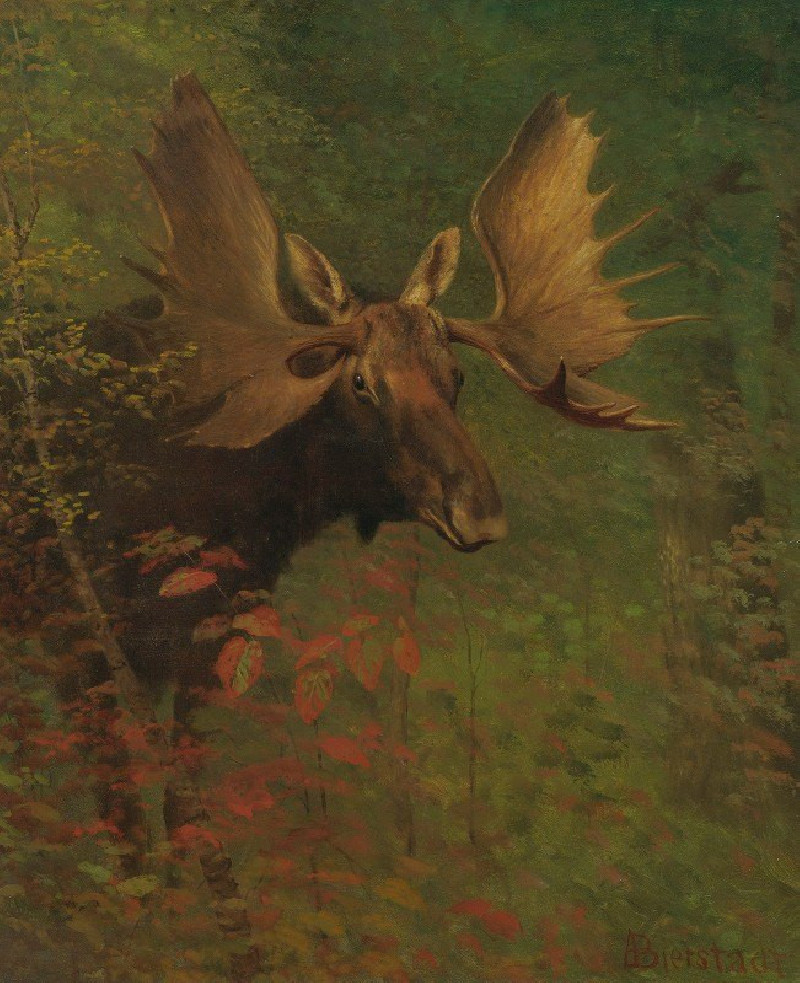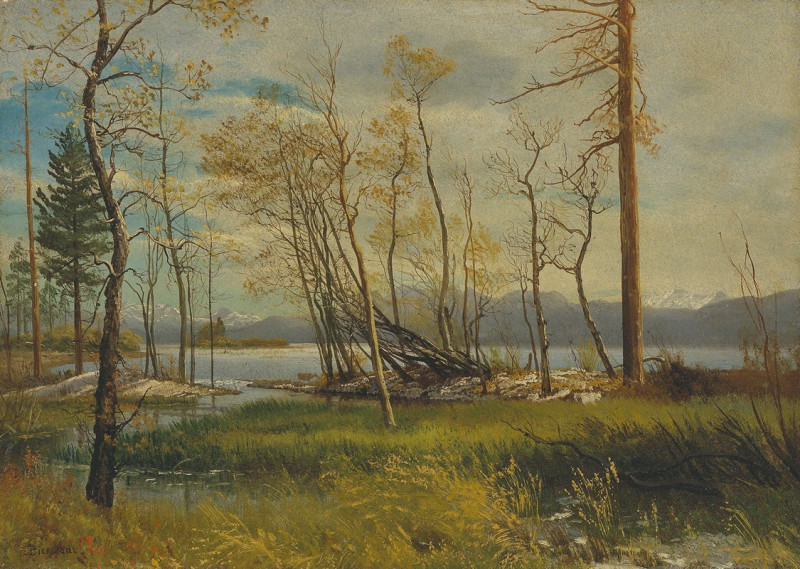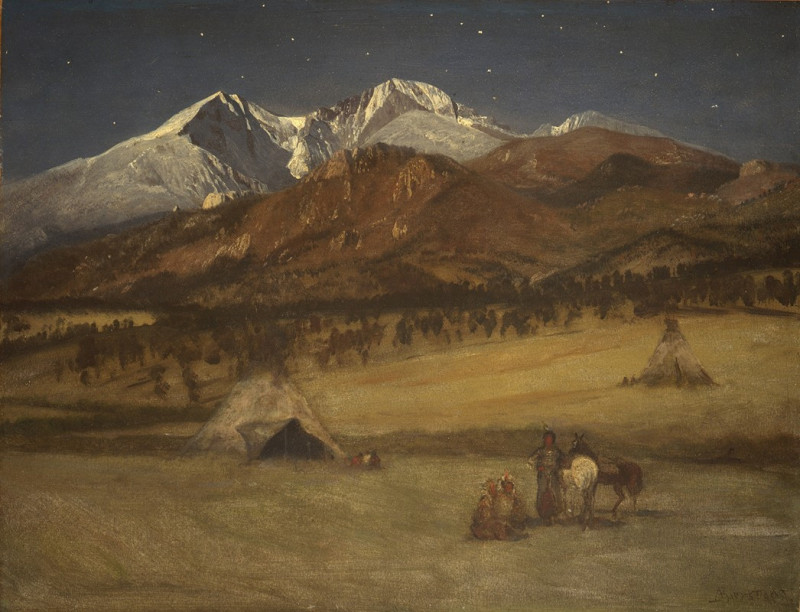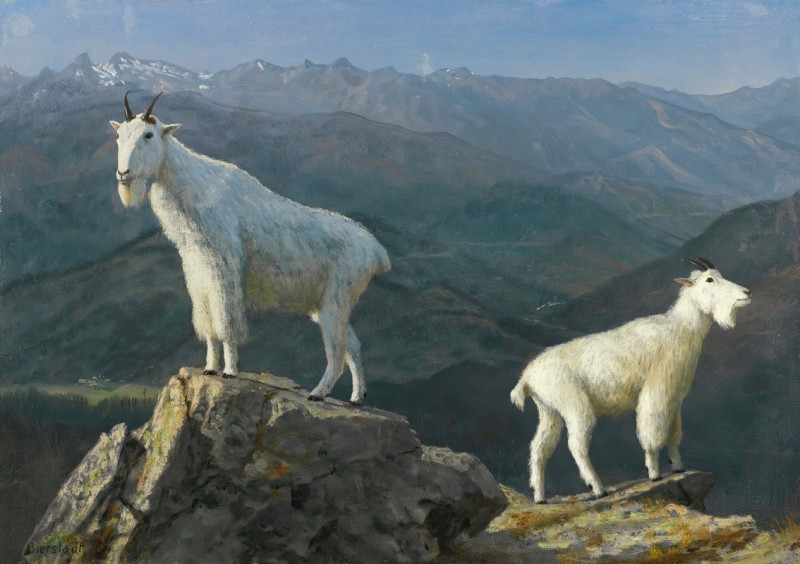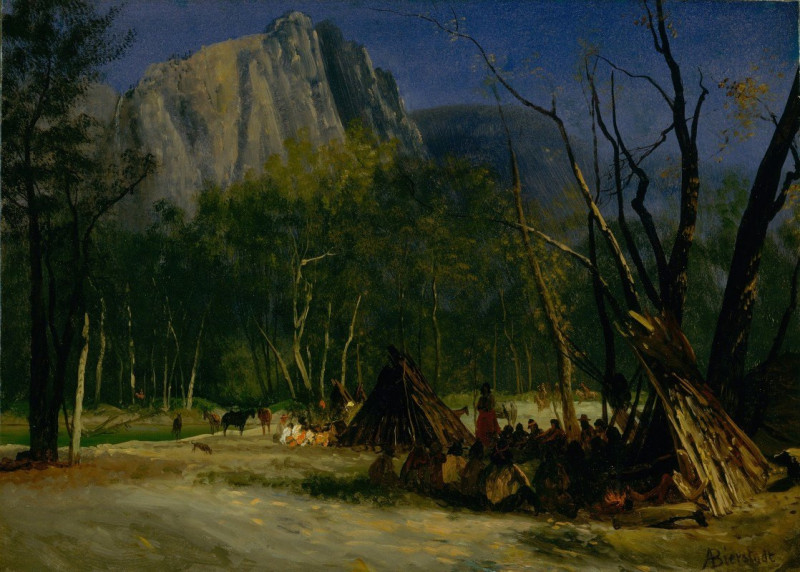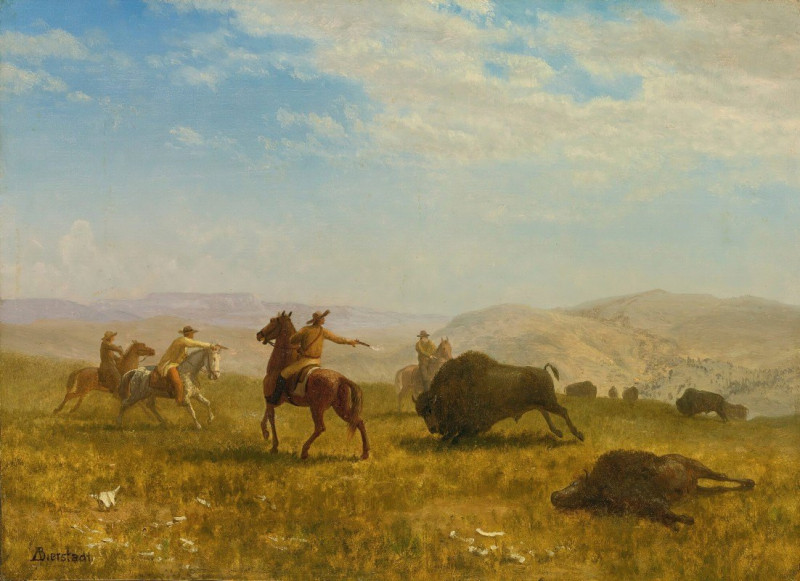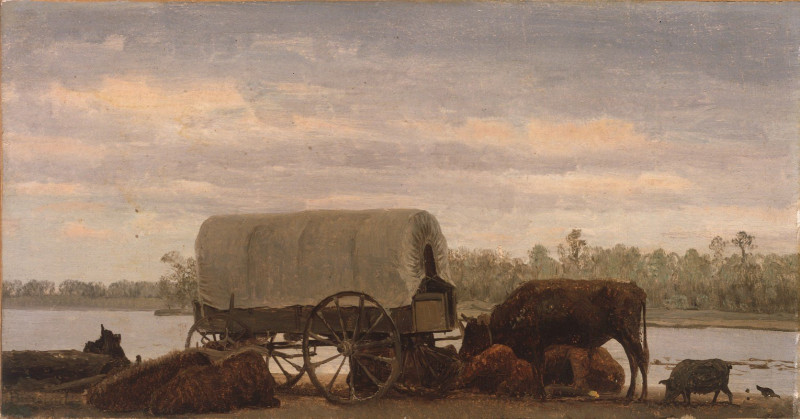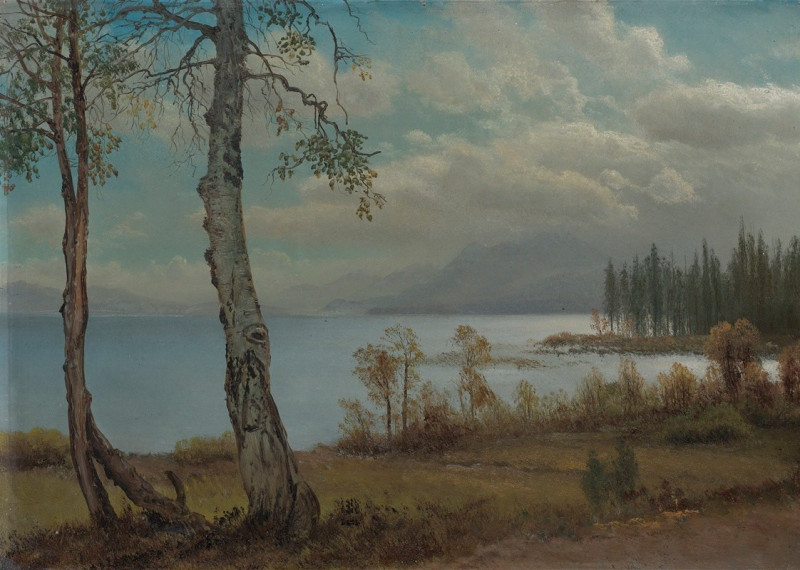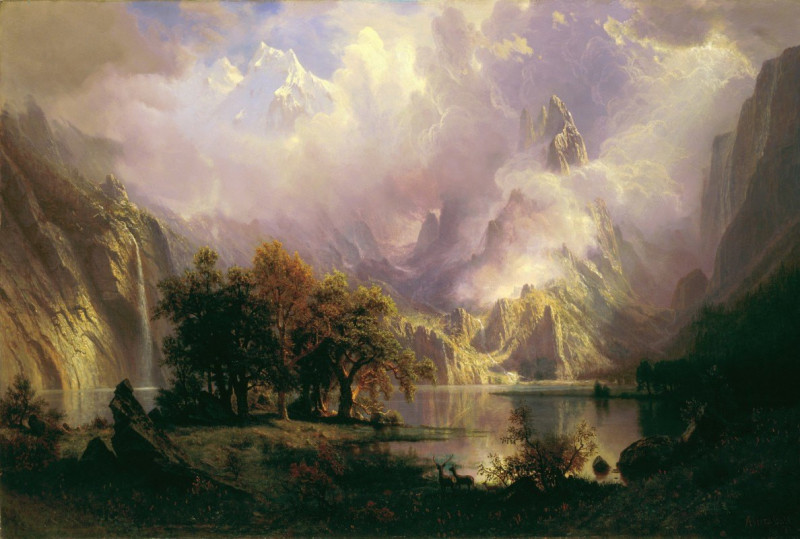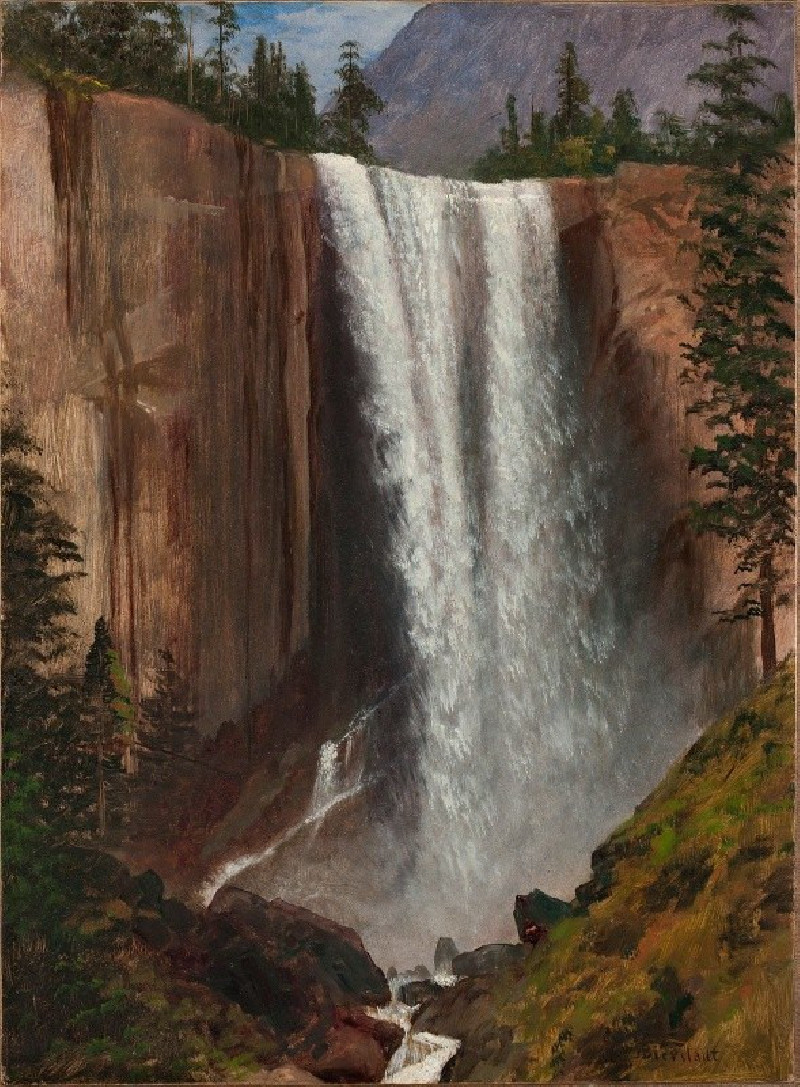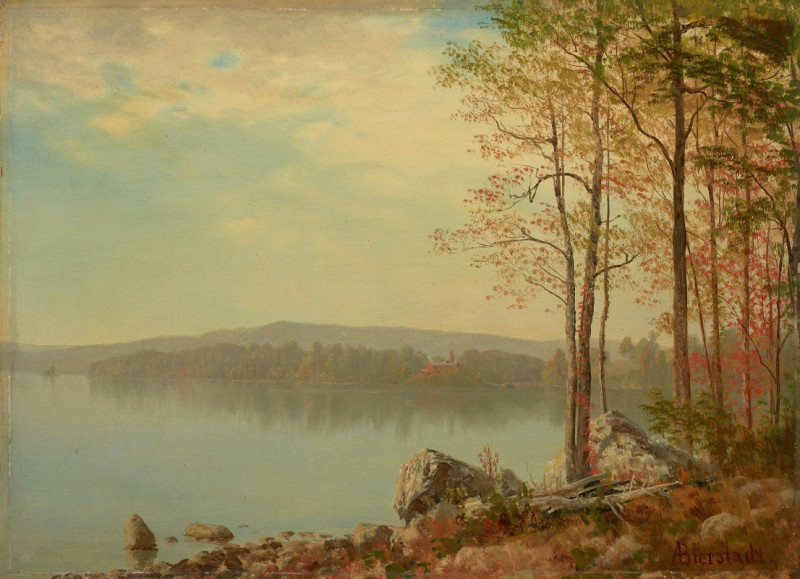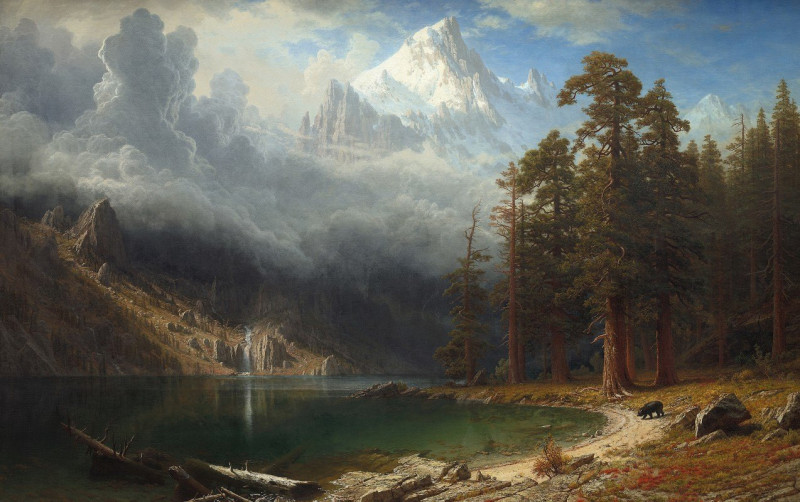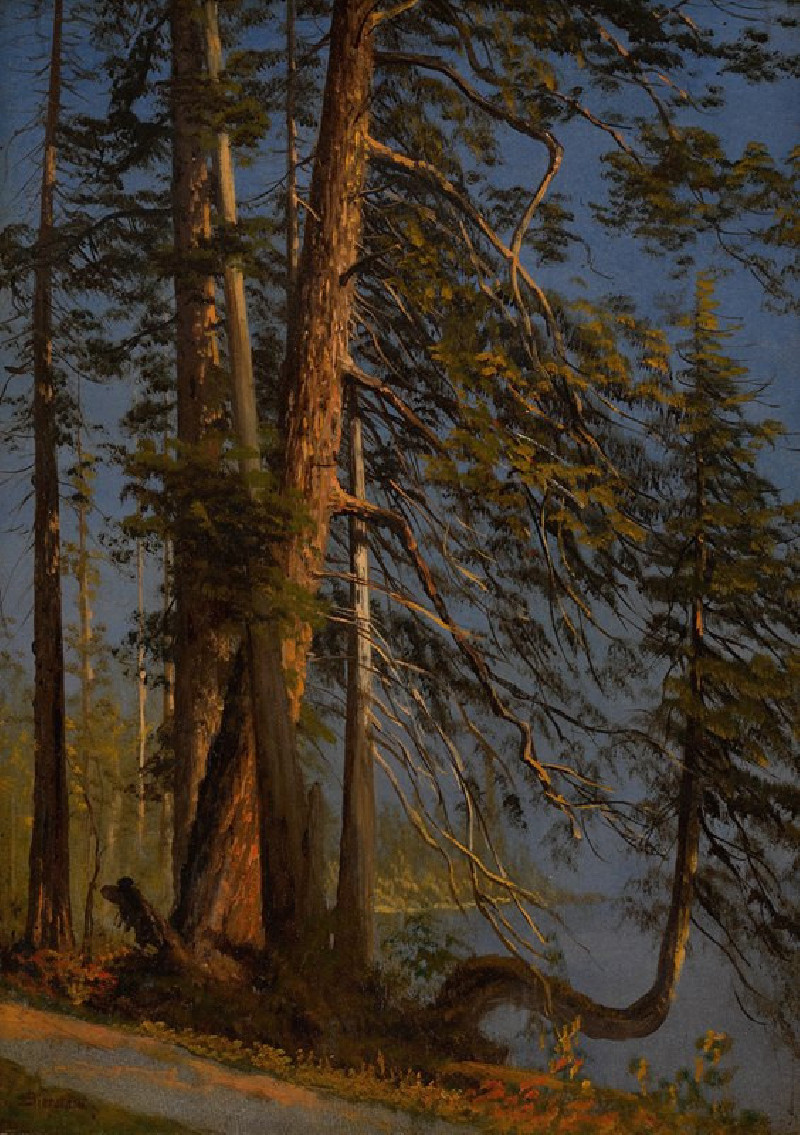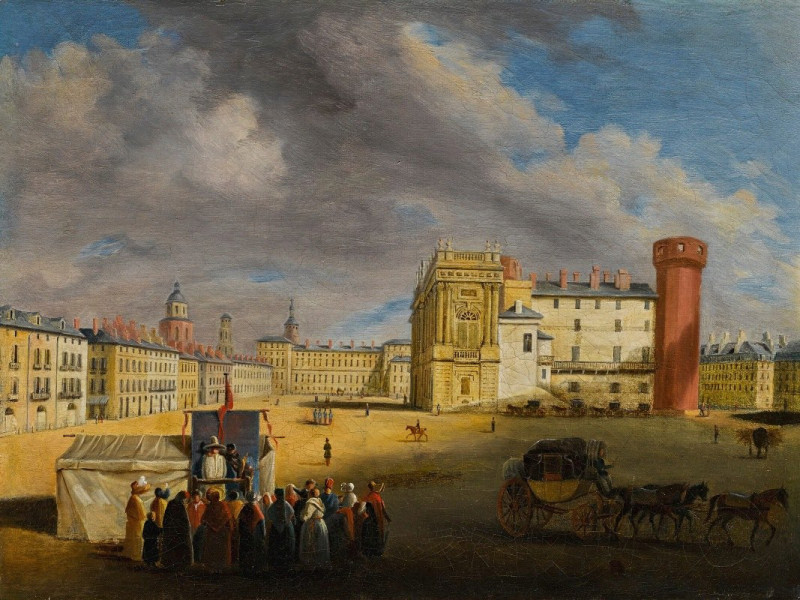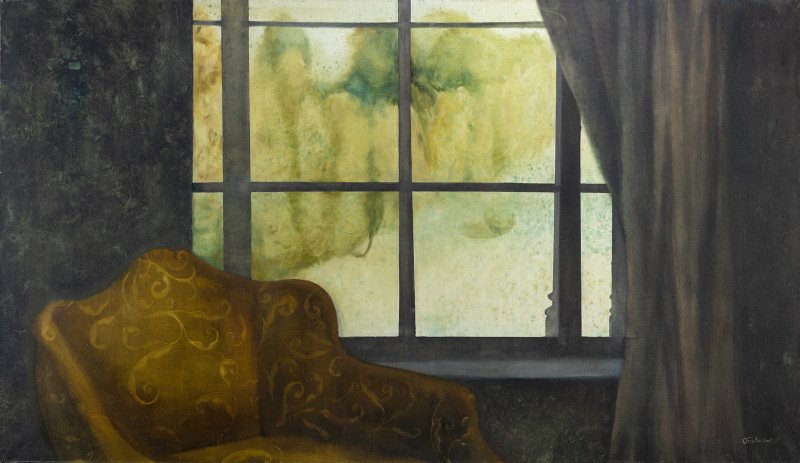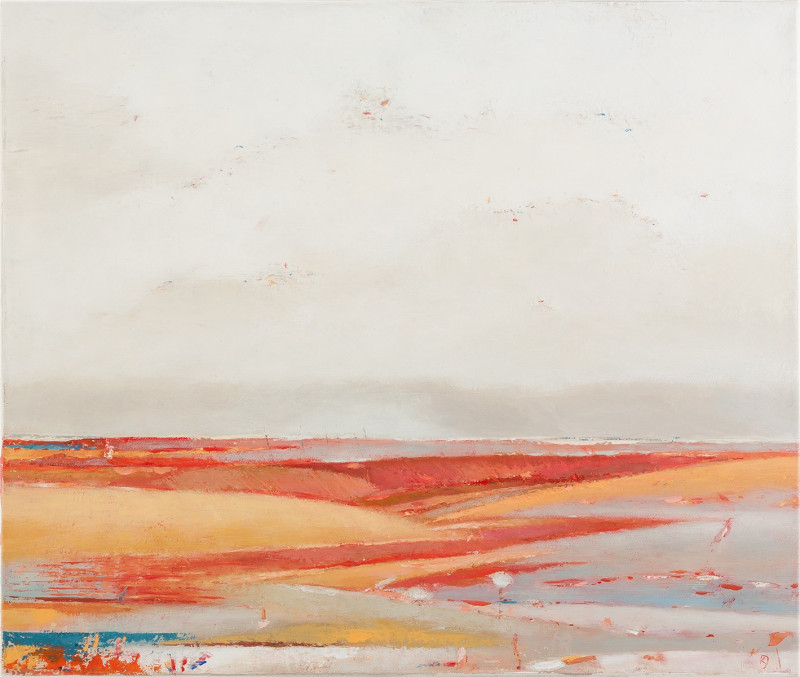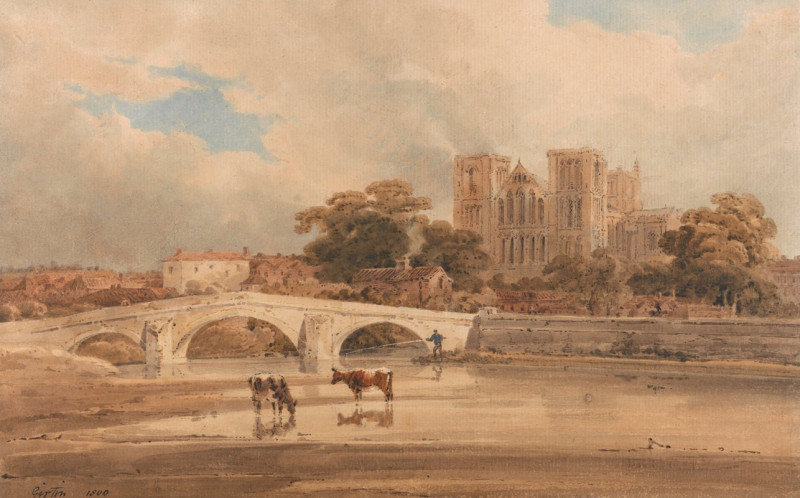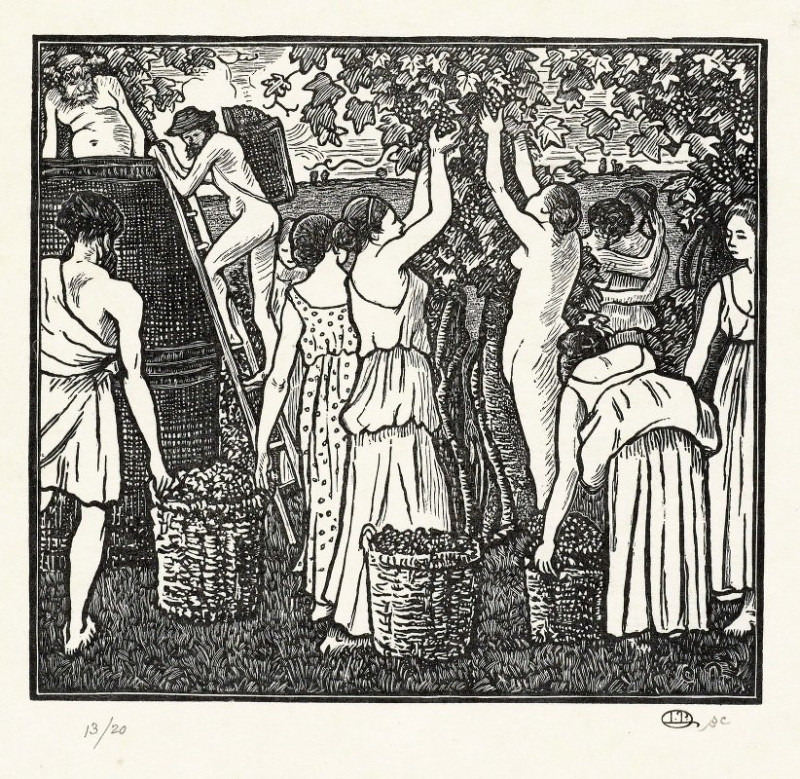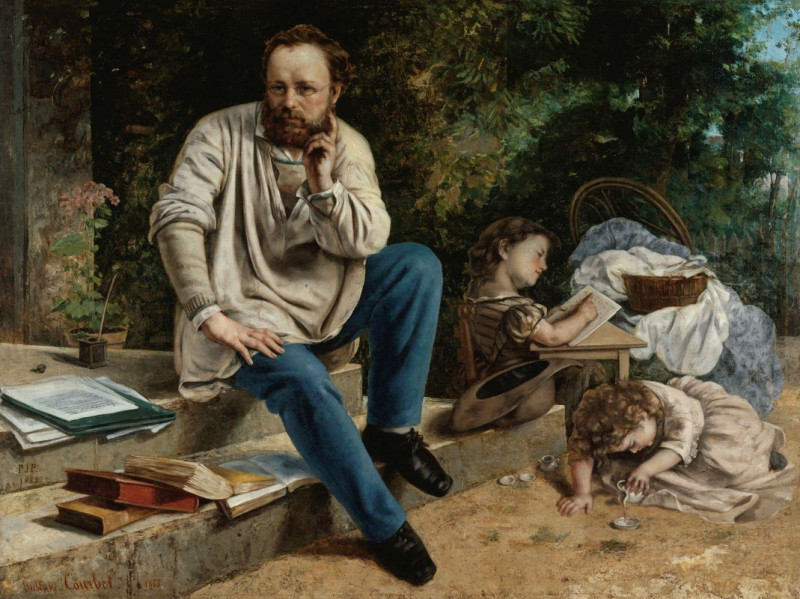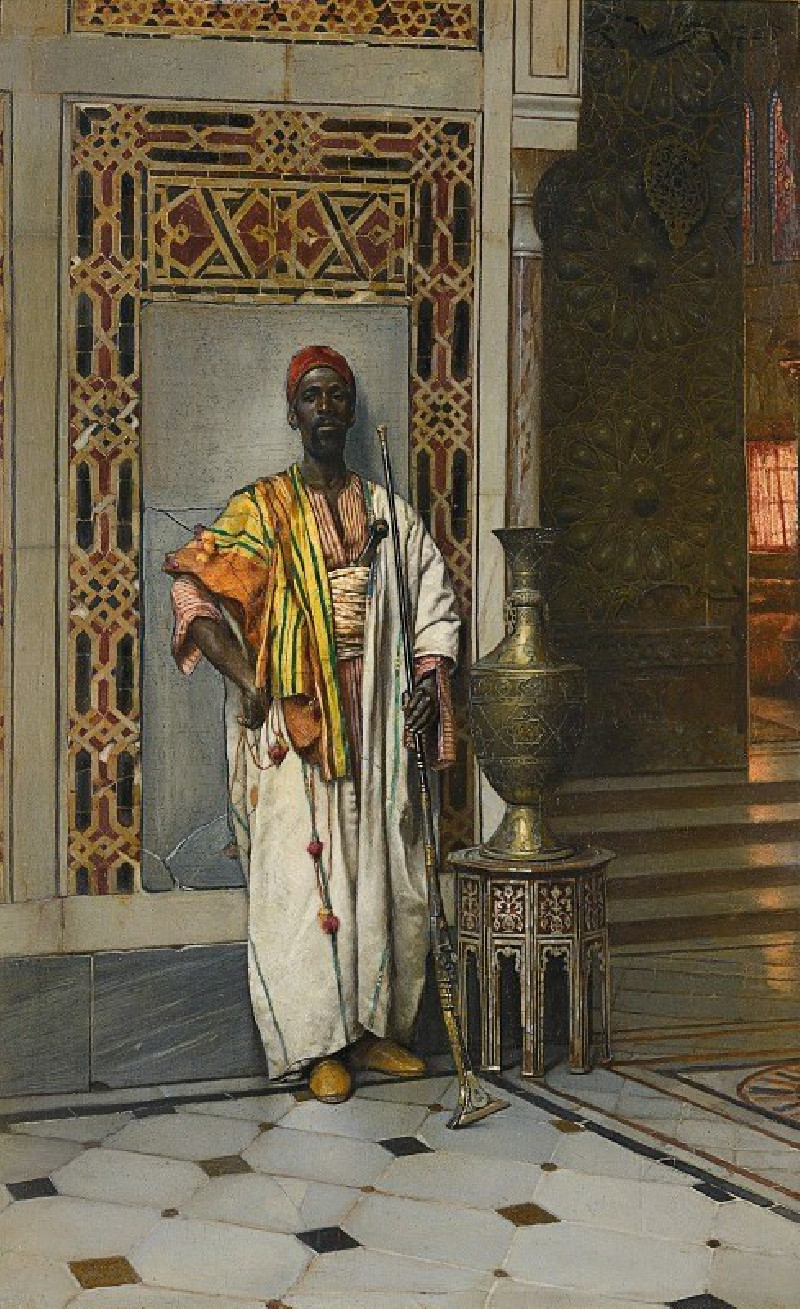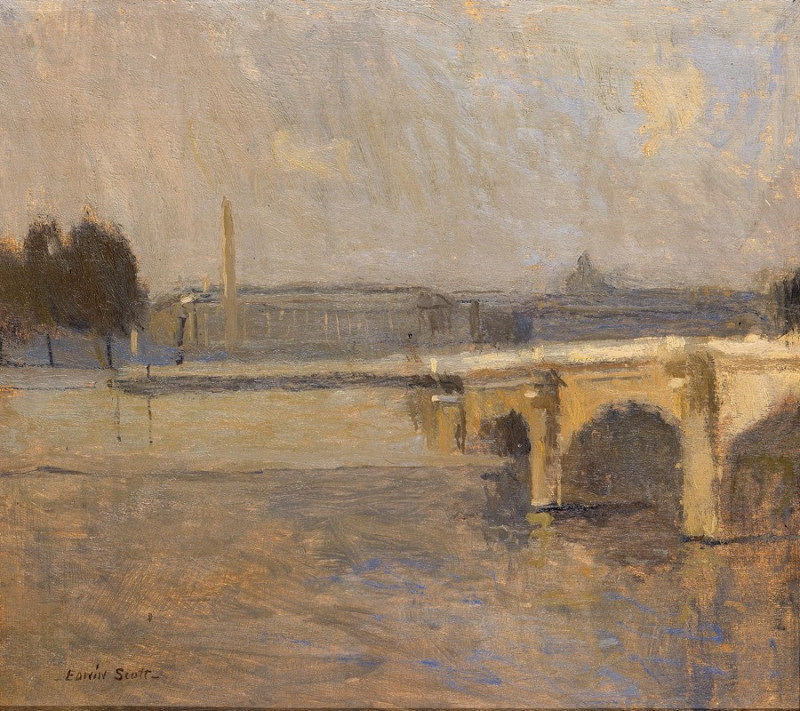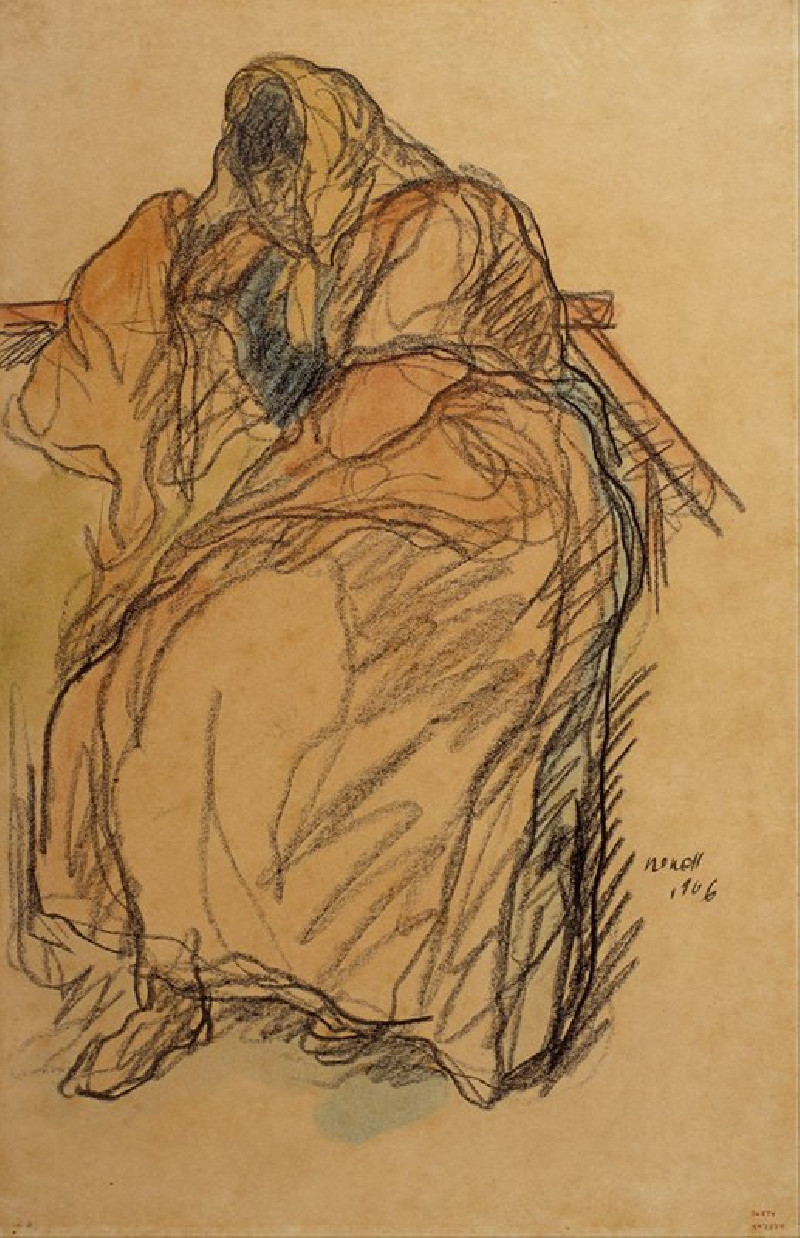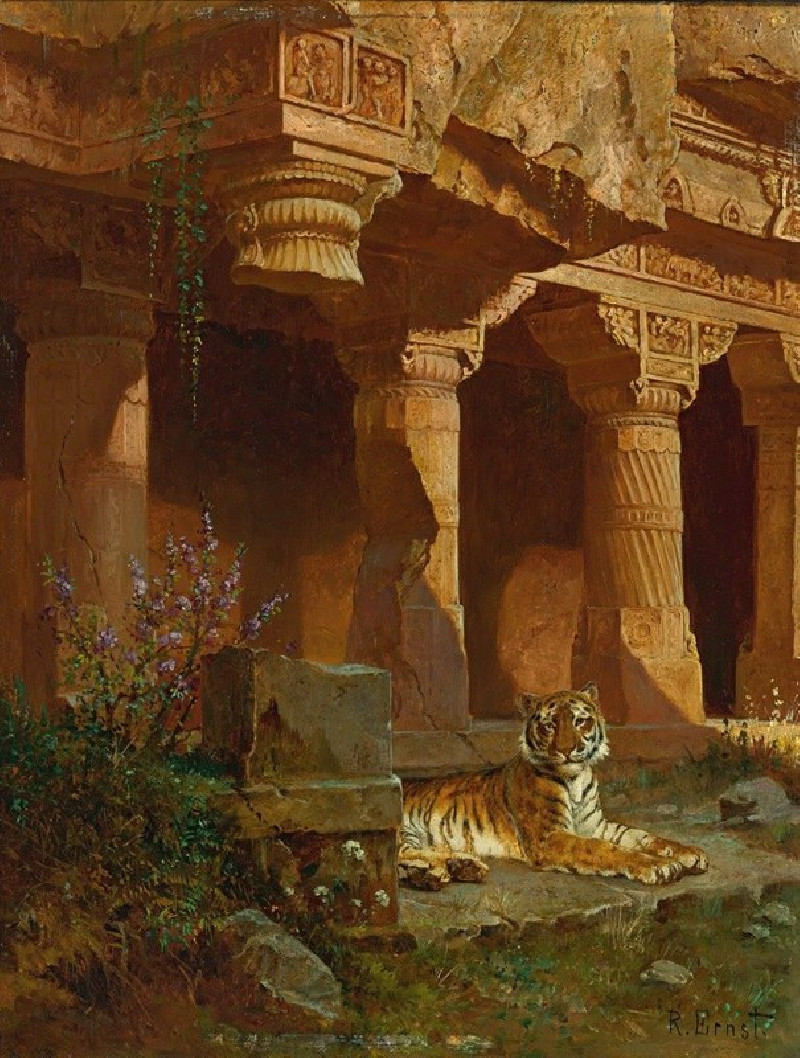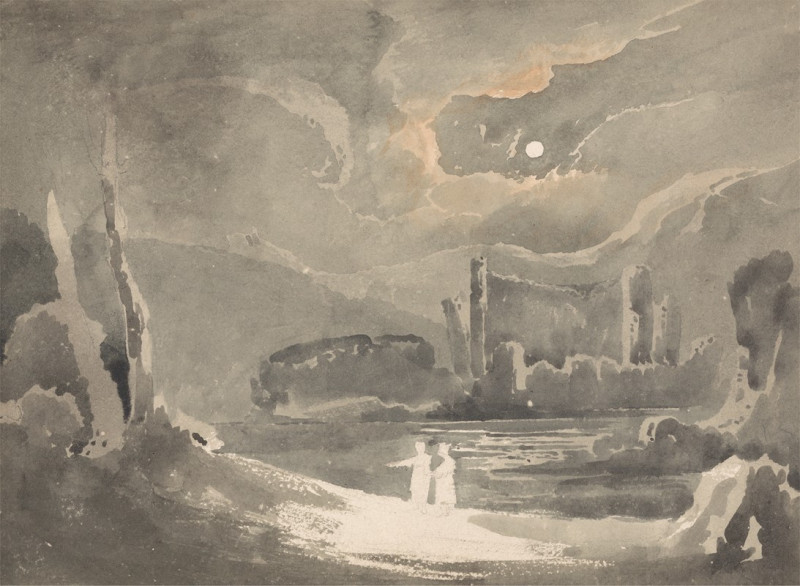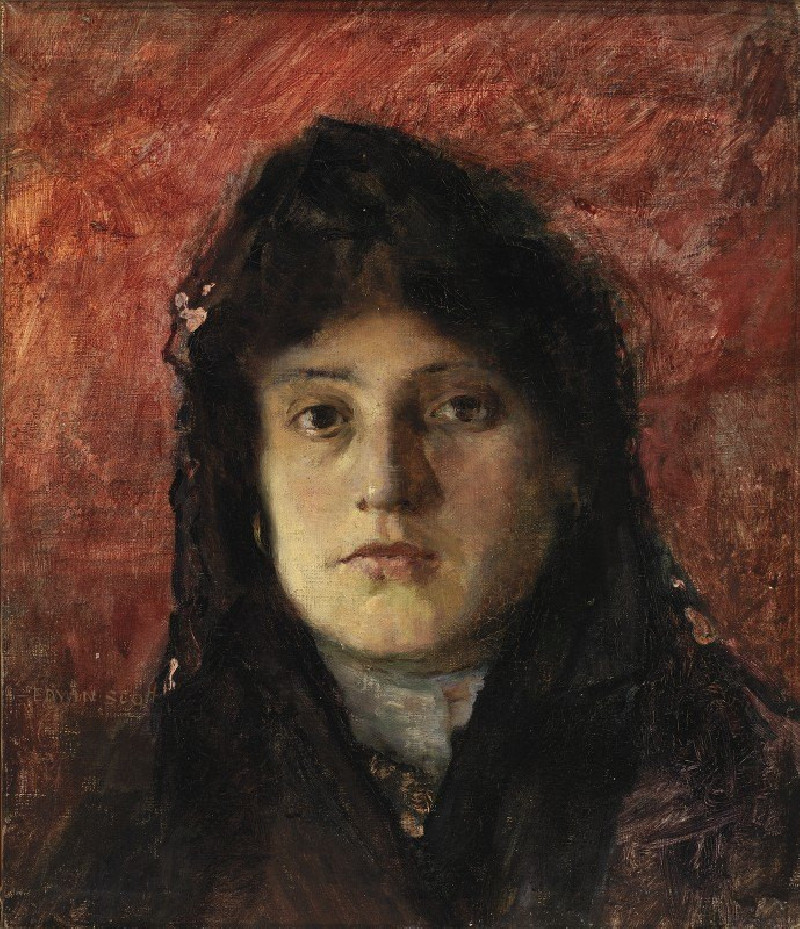The Wolf River, Kansas (ca. 1859)
Technique: Giclée quality print
Recommended by our customers
More about this artwork
Albert Bierstadt, renowned for his majestic and detailed landscapes, captures the serene beauty of The Wolf River in Kansas in this enchanting painting. Dating from around 1859, this artwork provides a glimpse into the life and environment of Native American tribes during the mid-19th century.Bierstadt's mastery in depicting light and natural detail brings this scene vividly to life. In "The Wolf River, Kansas," a tranquil river reflects the soft, diffused light filtering through the towering trees, while a gentle haze lingers, suggesting the early hours of the day or the humid atmosphere after a morning drizzle.On the riverbank, Native American tepees stand in harmony with the landscape, painted in warm, earthy tones that echo the natural surroundings. These dwellings suggest a peaceful, temporary encampment, possibly for hunting or gathering purposes.The daily life of the tribe is subtly portrayed; figures clad in traditional attire are visible in various states of activity. Some individuals gather near the tepees, while others are involved in tasks near the river. In the foreground, a focal point of the composition, two riders on horseback and another figure beside them are depicted crossing the shallow river, perhaps returning from a journey or moving towards the encampment.Albert Bierstadt’s work not only showcases his artistic skill but also serves as a cultural document, reflecting the respect and fascination he held for the natural landscape and indigenous peoples of North America. "The Wolf River, Kansas" invites viewers to contemplate a moment of everyday life, set against the backdrop of the vast American landscape that Bierstadt so adored.
Delivery
Returns
Albert Bierstadt (January 7, 1830 – February 18, 1902) was a German-American painter best known for his lavish, sweeping landscapes of the American West. He joined several journeys of the Westward Expansion to paint the scenes. He was not the first artist to record the sites, but he was the foremost painter of them for the remainder of the 19th century.

